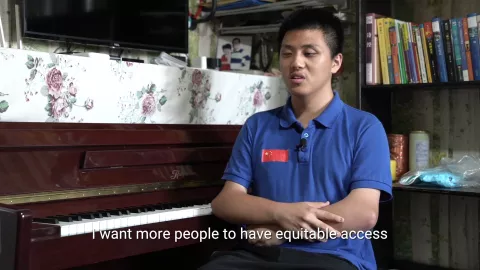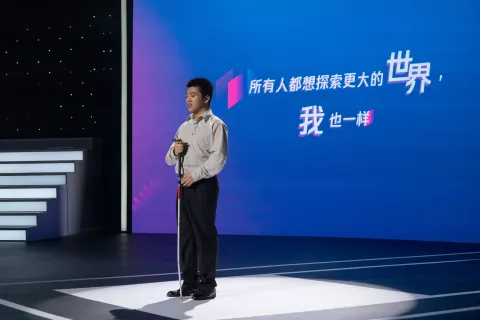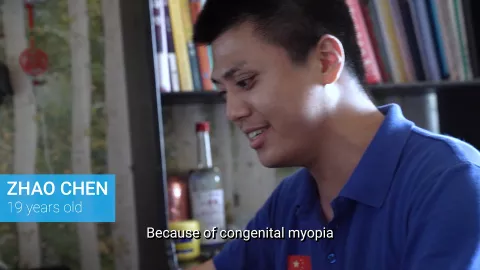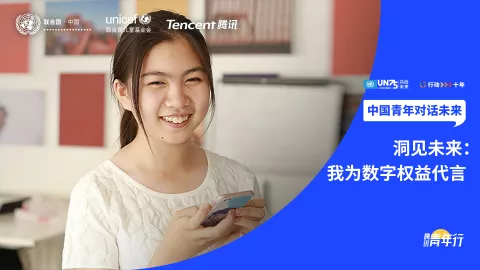The change needed for a digital world still full of barriers
better digital inclusion for everyone, everywhere and in every circumstance
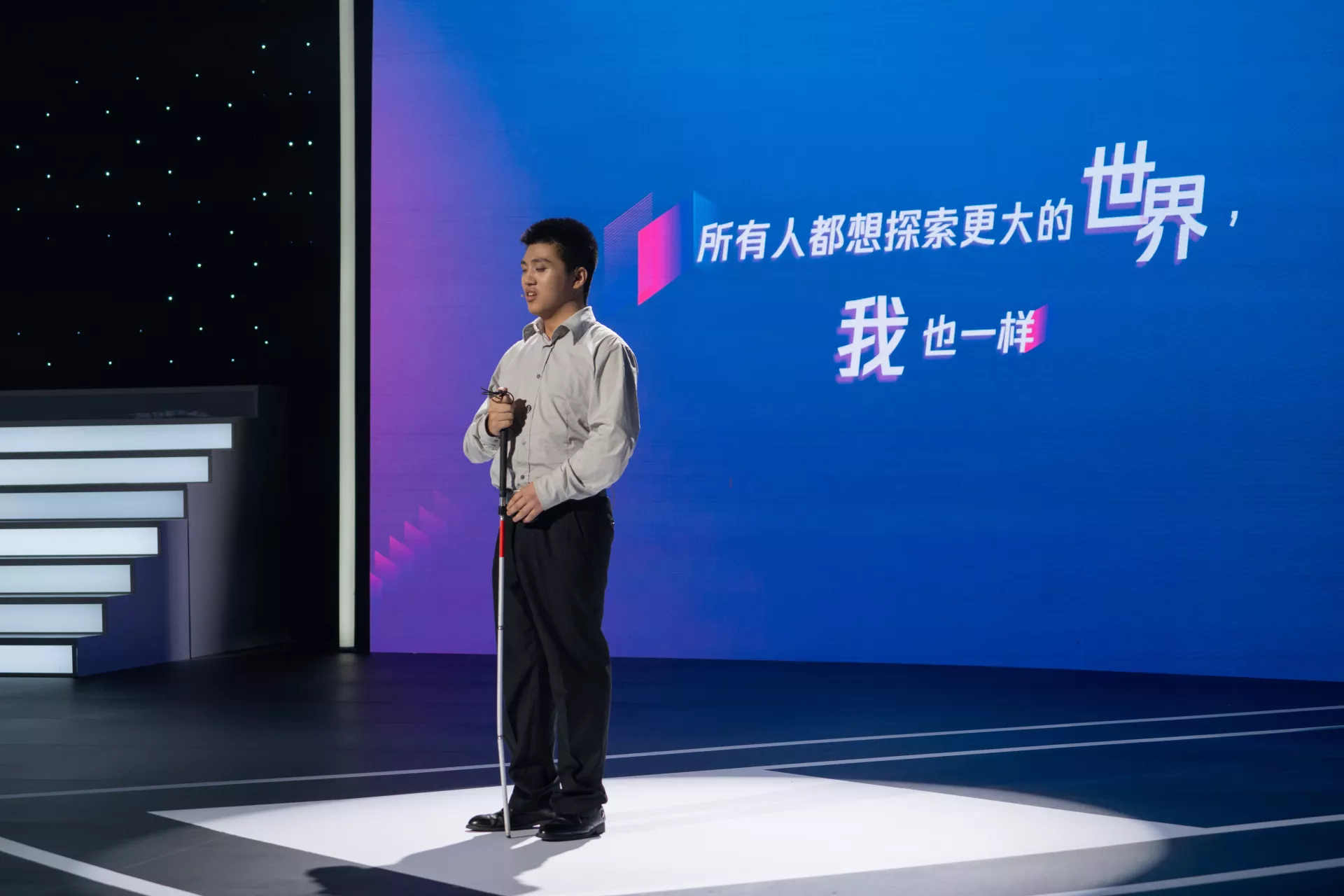
- Available in:
- 中文
- English
Hello, everyone, I'm Zhao Chen, a UNICEF Youth Advocate.
I am a visually impaired person. In the past 21 years of my life, with the gradual loss of my vision, digital technology has witnessed accelerated development, from the personal handphone system to the mobile internet, and from Happy Farm (an online social game), to the blockchain and the meta-universe. It has made it possible for me to get to know different people, and for many ideas to take shape in my head. Actually, I am only able to practice my English so extensively through connecting with volunteers all over the world and accessing a massive amount of information through the internet.
However, the more I explore, the more I discover that digital technology is far from perfect, as some of us thought it to be. In order to elevate audience numbers, the designs of digital products are always inclined to suit the interests of the majority, while neglecting or even ignoring the different physical and intellectual conditions of many.
From image verification codes to automatic phone calls to remind you of a payment, digital technology today still lacks inclusiveness. When I saw a flash warning in the app store, while feeling appreciative for the thoughtful reminder, I also thought about how an optimized display option should be provided so that flash-sensitive users could be included instead of being politely rejected. And there are many more issues to be addressed – the furniture that has been upgraded to be touch-interactive, but not functionally optimized; the keyboards that have been made lighter and slimmer but also harder to use; and the ticket vending machines and card vending kiosks that have been made more stable and secure but less accessible.
Besides those obvious developments, the interactive nature of digital technology has also endowed people with an unprecedented level of convenience in communication. Yet behind the digital interface, people’s views are so different and sometimes differences lead to arguments, conflicts or even violence. Those who hope to have an earnest discussion about things that matter do not know how to start – they would just keep up a peaceful façade, and hide their truthful but possibly troublesome thoughts. At the same time, the murky distribution system of adult content and the risks of private information being leaked has made so many of us insecure in the world of the internet. Moreover, in the future-facing internet-of-things, the power of mankind will be enhanced to such a level that we could easily move things around others through remote control, and the sense of reality from an immersive virtual community may make us more vulnerable to the ill intentions of bad people. In the era of an information explosion, when everyone is struggling to express themselves, what I see is the desire for a cyberspace with greater security and inclusiveness.
Is there really nothing we can do to address these problems? I don’t think so. There are so many people with different physical conditions and they are starting to discover new possibilities.
For example, NVDA (Non-Visual Desktop Access), the screen reader I’ve been using for many years, is operated entirely by a non-profit organization. As an open source and free software, it has illuminated the lives of many visually impaired people, who are in turn making this software better and stronger by participating in much of its maintenance work – I am one of them. So many visually impaired and outstanding people, including masseurs, lawyers, musicians, and increasingly university students, are benefiting from this project, which I think is something close to a legend. These people can now enjoy equal opportunities thanks to this community, and they are now able to contribute to social progress and help others through their own effort, without being trapped in the unsustainable model of relying solely on social welfare.
A while ago, I learned from Bilibili about the design of a gaming bed by Zimujun, a digital vlogger, for Mr. Zhu, a gaming vlogger with a high level of paraplegia. It has unveiled to me an innovative and promising way for people with disabilities and people without disabilities to interact. Mr. Zhu’s livestreaming has gained people’s respect and their attention to digital inclusion, and it has empowered people with disabilities with more equal opportunities.
Just as Zimujun has mentioned, “They (people with a high level of paraplegia like Mr. Zhu) can do much more than just lying in bed and giving in to fate. Instead, they can be in an awe-inspiring environment, to be a vlogger, a gamer, a psychological counsellor, to enjoy life and realize their value to the fullest.”
And this is what I hope to share with you all: digital technology may lack inclusiveness, and there are issues and loopholes, but it still is something close to my heart. I have grown together with it, from a child to a man, and I have taken a mere idea to an action – digital technology has made it possible for me to live beyond the stereotype of ‘being sad and incapable’.
I'd like to join all of you to call for better digital inclusion in the future, so that we can make the world that we all love so much even better for everyone, everywhere and in every circumstance.


